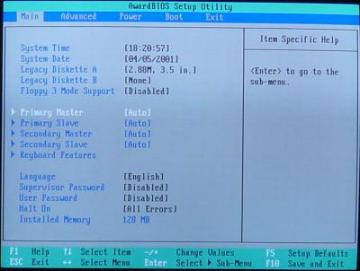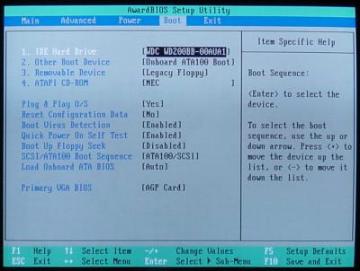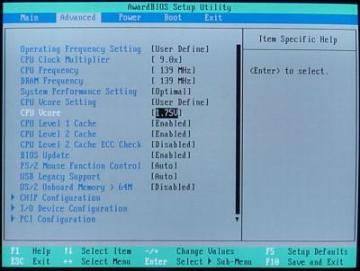
|
|||||||||||||||||||||||||||||||||||||||||||||||||||||||||||||||||||||
|
||
|
BIOS and OverclockingThe A7V133's BIOS is pretty
easy to use. There are 3 main menus you'll want to look at: Main, Advanced,
and Boot. Main is where you want to check to see if the all your IDE
devices have been identified properly, and Boot is where you put them in
the correct sequence. Advanced is where you can change the multiplier, FSB,
and VCore by setting the "Operating Frequency Setting" and
"CPU VCore Setting" to "User Defined." Also, in the
Chip Configuration submenu, you will find the AGP and SDRAM tweaks (though
the A7V133 offers only a minimum of the latter).
"Main" BIOS Screen
"Boot" Screen
"Advanced" Screen
You may have noticed in the earlier pages that I haven't exactly provided a cornucopia of overclocking benchmark scores. The reason is simple: the A7V133 just didn't give me very many overclocking results. I have mentioned that there are three ways of overclocking AMD CPUs: using the multiplier, the FSB, and a combination of the two. With this board and CPU, I could nudge the multiplier up to 9.5, giving me a clock of 1263.5MHz (WCPUID reported it as actually 1275.88), but any higher and I could not boot into Windows more than once. Each time I restarted, the BIOS reset itself to 12x100! I could also keep the multiplier at 9 and get the FSB as high as 139 for a clock of 1251MHz, but 140 was a no-go. This was especially disappointing as I know that this same CPU can go as high as 1.350GHz on other boards with absolutely no voltage tweaks. Naturally, a multiplier/FSB combination was out of the question. (Note: the highest possible VCore setting on the A7V133 is 1.85v, but this did not help things any. Nor did changing the I/O voltage via jumper to 3.58.)
|



